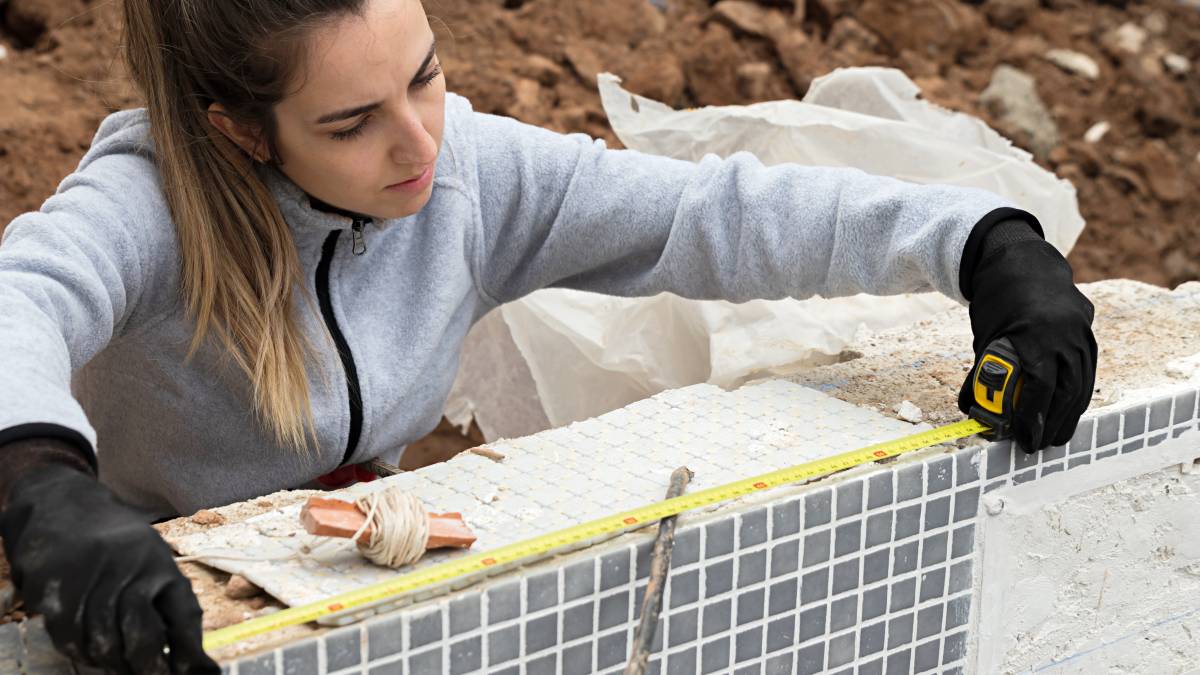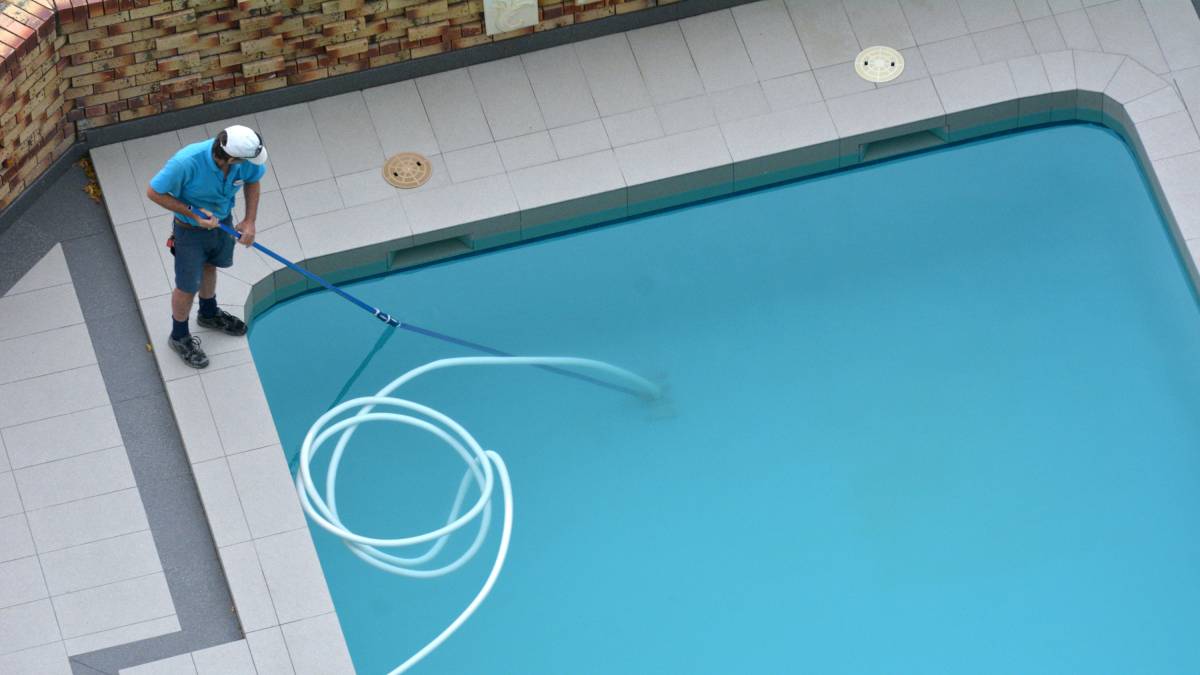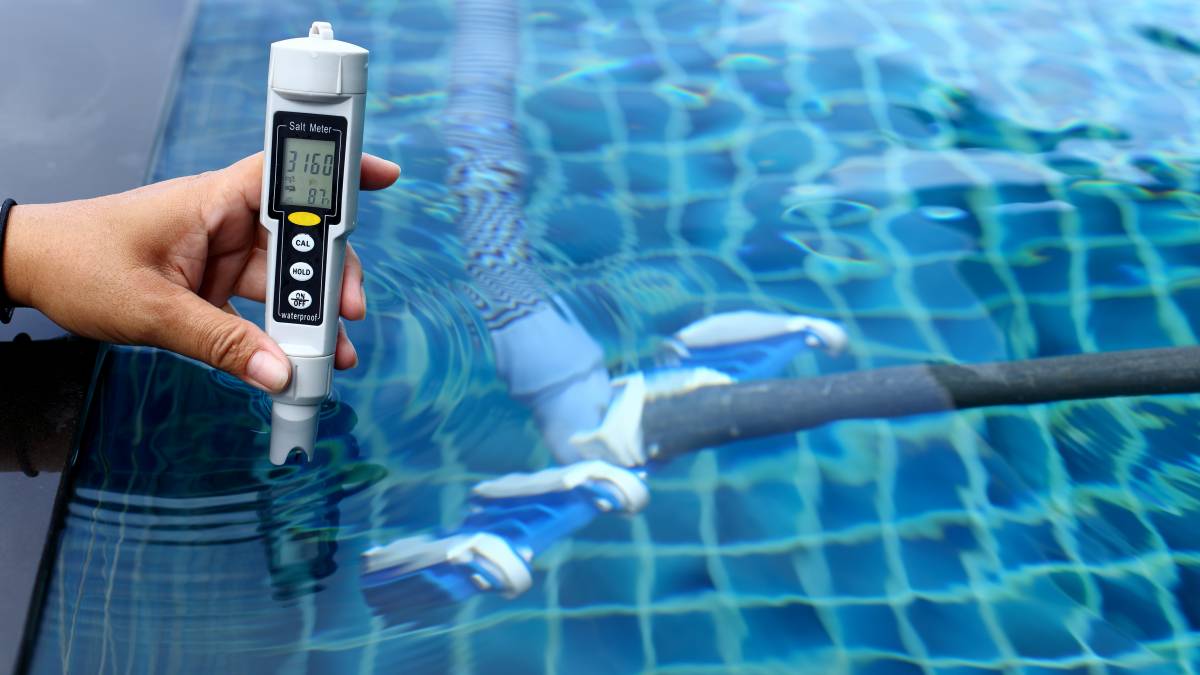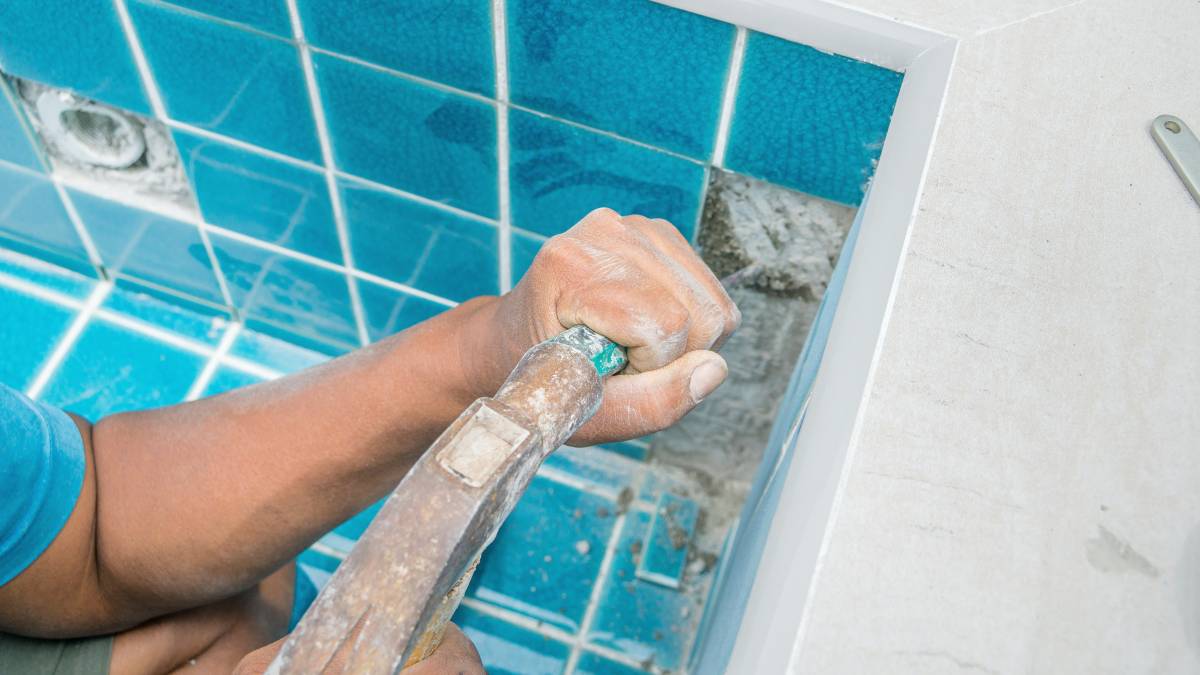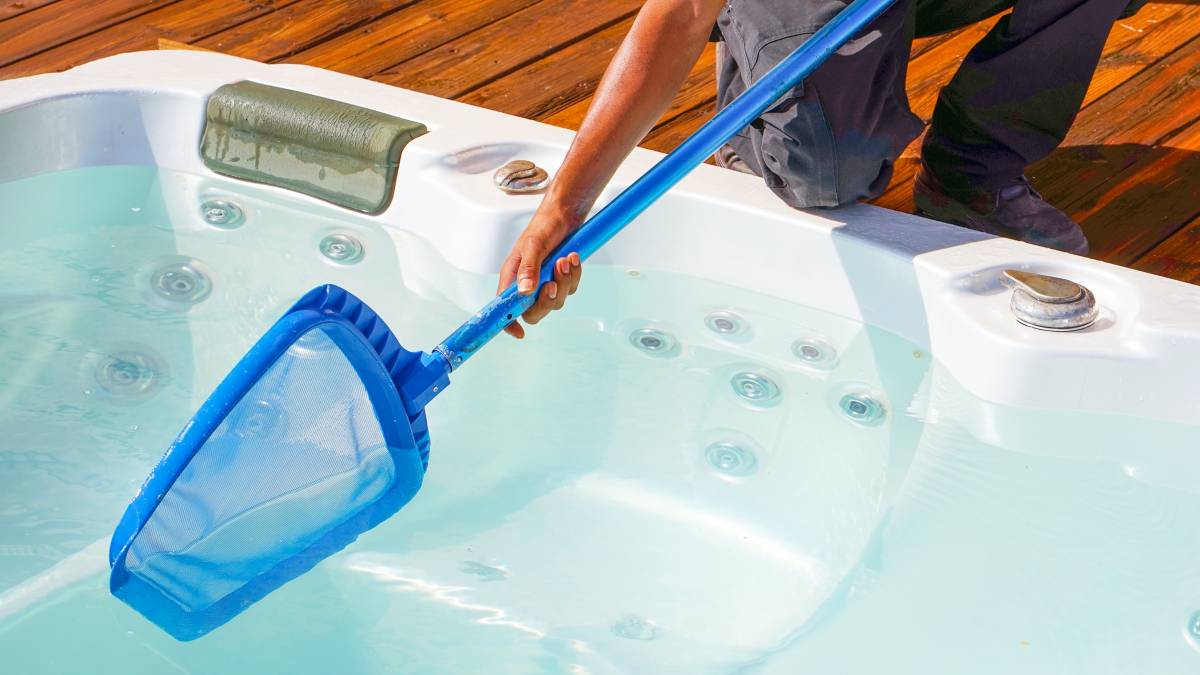- Home/
- Guides/
- Hot Tub Maintenance/
- How to Maintain a Hot Tub

How to keep your hot tub clean
Learn the ins and outs of hot tub maintenance with this guide.
Find a handymanLast Updated on
Having a hot tub is neat—but like anything, there’s maintenance that comes with it! Otherwise, you might run into an unpleasant experience on your next dip.
To keep an easy hot tub maintenance and water treatment schedule, make sure to take note of the make and model of your specific unit. This information comes in handy when you need to have parts of your unit maintained or repaired. Take note of your hot tub’s water capacity, age, and specific water challenges (like hard water).
How often do I need to maintain my hot tub?
Every 3 to 4 months is the standard recommendation for hot tub care. However, the best way to decide the frequency of cleaning is the bather load of your hot tub.
To keep your spa water crystal clear, you must follow a hot tub maintenance schedule. There are tasks recommended for daily, weekly, monthly, and quarterly hot tub care. See table below for a quick reference:
Daily |
Weekly |
Monthly |
Quarterly |
|
Add a registered sanitiser every after use Check water temperature to ensure that the system is functioning well When not in use, check and maintain sanitiser levels Add water as needed to keep it full |
Test sanitiser, alkalinity, and PH levels Stain and scale control Filter rinsing Water pH and alkalinity adjustments Whip off debris above the waterline Air out, wipe spa cover to prevent moulds |
Filter cleaning Check if jets are functioning |
Pipe/spa drain cleaning Emptying and deep cleaning of the hot tub Filter replacement Water refill Add chemicals and test levels Clean exterior walls |
What do I need to maintain my hot tub?
Before you start, here’s a handy hot tub maintenance checklist so you won’t forget the necessary tools! Necessary supplies vary depending on the maintenance procedure you want to conduct.
For testing and adjusting to keep hot tub water clear:
Test strips
pH increaser and pH decreaser for adjusting your pH
Alkalinity increaser to protect your pH from any drastic change
Sanitiser (chlorine or bromine) to kill bacteria and other contaminants
Shock (non-chlorine or di-chlor) to give your sanitiser a boost by adding oxygen and removing chloramines and bacteria.
Test strips or a liquid test kit to make sure all your chemical levels are in the right range.
Defoamer to remove residue of foamy hot tub water.
How to maintain a hot tub
Are hot tubs really hard to maintain? There are three secrets to maintaining a hot tub: (1) maintain good water circulation, (2) follow a simple cleaning schedule, and (3) balance your water chemistry. Here are the steps for common hot tub care.
Hot tub water care: Testing the water
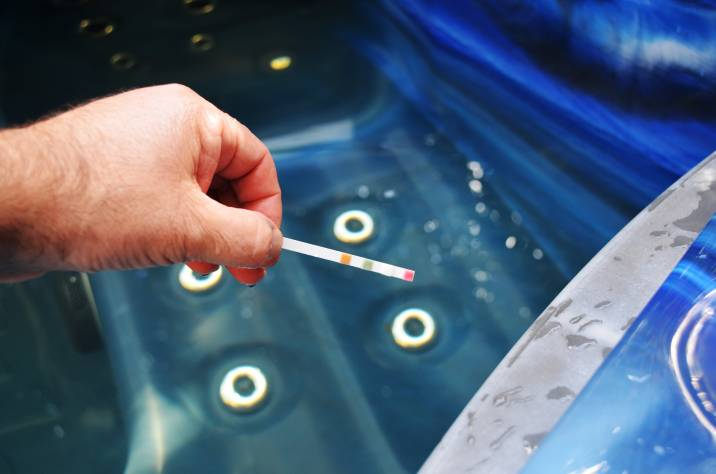
Depending on where you are, you may encounter water quality issues. Keep your hot tub water fresh and clean by balancing water chemistry. To make necessary adjustments, you must regularly test the water’s pH, alkalinity, calcium hardness, and sanitiser levels. Test water using test strips 2-4 times per week and as needed to keep the water balanced within the acceptable ranges:
Chlorine: 1.0 to 3.0 ppm
Bromine: 2.0 to 4.0 ppm
pH: 7.4 to 7.6 ppm
Total Alkalinity: 80 to 120 ppm
Calcium Hardness: 150 to 250 ppm
Hot tub water care: Adjusting water
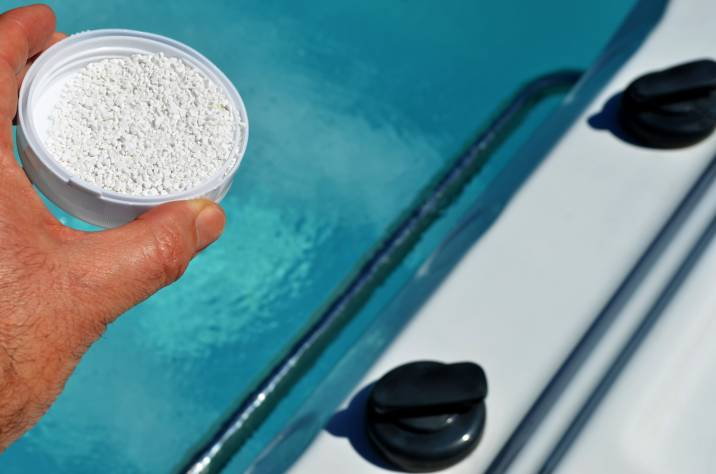
Keep the pH balanced between 7.4 to 7.6. Not too acidic, not too basic.
To lower alkalinity in your hot tub, add pH decreaser or soda ash.
Cleaning the spa filter
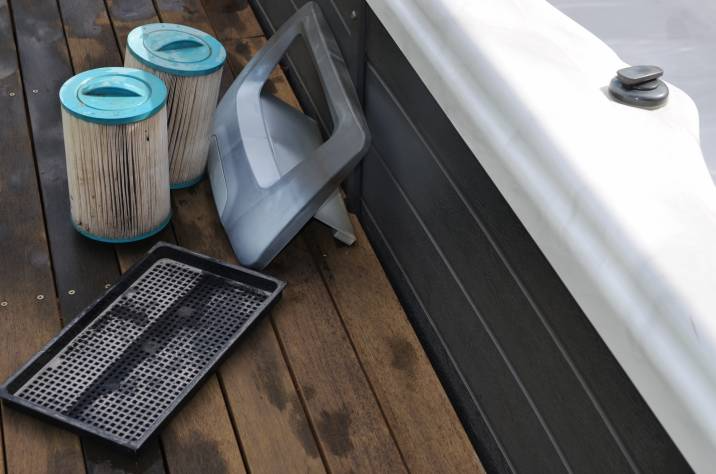
Cleaning the spa filter is necessary to keep the hot tub water clear
Rinse your spa filter as often as possible using warm water or your garden hose.
Spray your filters every week or so using a hot tub filter cleaner to maintain a deeper clean. Rinse them after, too.
Soak your filters in chemical cleaner every time you drain and refill your hot tub. This is to extend their life and loosen any stubborn particulates. Don’t forget to rinse them thoroughly afterwards.
When chemical soak is no longer enough to clean them, it’s usually a sign that you need to replace them.
Draining the hot tub
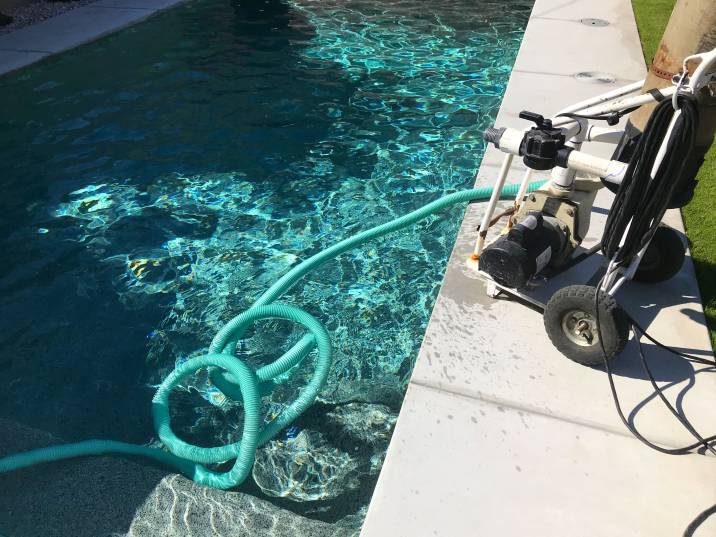
Check with your local city law to know where to drain your water. Many cities mandate you to drain your tub water into the sewer system. Do not dispose of hot tub water in the storm drain because these drains lead to natural bodies of water. Dirty spa water can harm fish and other wildlife. If a sewage drain is not accessible, run a hose into the drain in a utility sink.
Flush your hot tub plumbing using a cleaner. A hot tub can develop biofilm, which bacteria feed on. The same bacteria ends up in your spa water, eating up chlorine and exposing you to other harmful contaminants.
Before draining, flip the hot tub breaker and cut the power supply to keep yourself safe from electrical shock.
Drain your hot tub with the built-in drain plug. You can connect a hose to the spa drain, but this is the most time-consuming option.
If you’re in a hurry, you can use a sump pump to empty your tub within minutes rather than hours.
Cleaning the hot tub shell
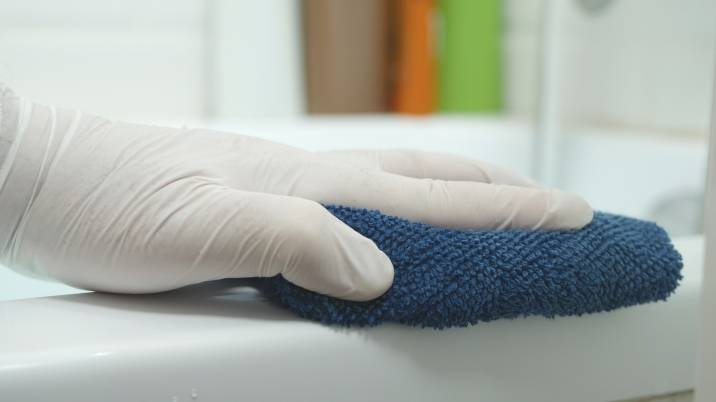
Spray your hot tub shell with hot tub cleaner, diluted white vinegar or diluted bleach. Double-check the nooks and crannies where mildew, algae, or bacteria could be hiding.
Remove residue using a soft cloth or non-scratch nylon scrubber.
Prevent foaming after refilling by rinsing all the surfaces well. Drain all the rinse water.
Double-check all the jets that are open after you’ve finished cleaning and rinsing.
Refilling a hot tub
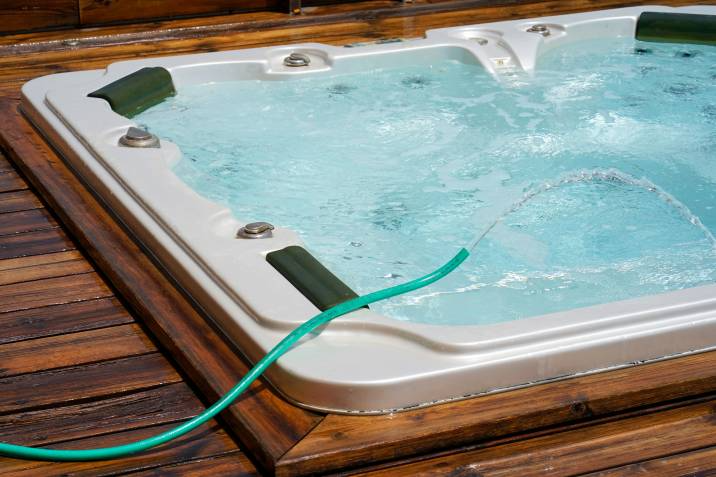
Close the drains and break out the hose.
Double-check if the breaker is still off.
You can use a hose filter when refilling to reduce impurities such as calcium and copper that may affect your water chemistry and overall spa health.
To ensure that any trapped air is forced out of circulation, insert the hose into the filter compartment and turn on the spigot. This prevents hot tub airlock.
Avoid overfilling the spa. If you accidentally do so, drain the excess immediately.
Turn the spa breaker on.
Start the hot tub, and add sanitiser and other start-up chemicals to treat the new hot tub water.
Turn off air valves, so there is no disruption in the chemical distribution.
Add a metal sequestrant if necessary, especially if your water source has a very high metal content. This helps prevent stains in your spa.
Test the water. Adjust pH, alkalinity, and calcium hardness as necessary.
Cover your spa for 24 hours to allow chemicals to circulate and the water to heat up to at least 80 degrees Fahrenheit.
Re-test the water when the spa reaches your desired temperature to confirm the water is balanced before anyone else uses the spa. Adjust as necessary.
Keep your hot tub clean and fresh regularly!
To regularly keep your hot tub clean and fresh, you must follow a timely cleansing schedule. If you’re busy, this might lead you to miss this regimen frequently.
But hot tub maintenance shouldn’t be stressful. When you think of a hot tub, it should excite you with a relaxing promise, not a stressful list of cleaning tasks. So don’t worry! You can leave the cleaning to a professional Tasker.
Hire a handyman through Airtasker for your hot tub maintenance needs today!
FAQs on maintaining a hot tub
Hot tubs require regular cleaning, and these maintenance procedures should be done either daily, weekly, monthly, or quarterly. If you don’t have the time to conduct these steps periodically, then it may be difficult for you to maintain them.
Depending on how often and how many people use your hot tub, some put a small amount after each use. But if you don’t use it daily, you should not put chlorine sanitiser in your hot tub every day. It usually depends on where the chlorine levels read on a test strip.
Depending on how frequently you use the tub, your hot tub should be drained and refilled about once every three or four months.
Find hot tub maintenance contractors, fast
Find a hot tub maintenance contractor
Related articles

How to keep your hot tub clean
Read more
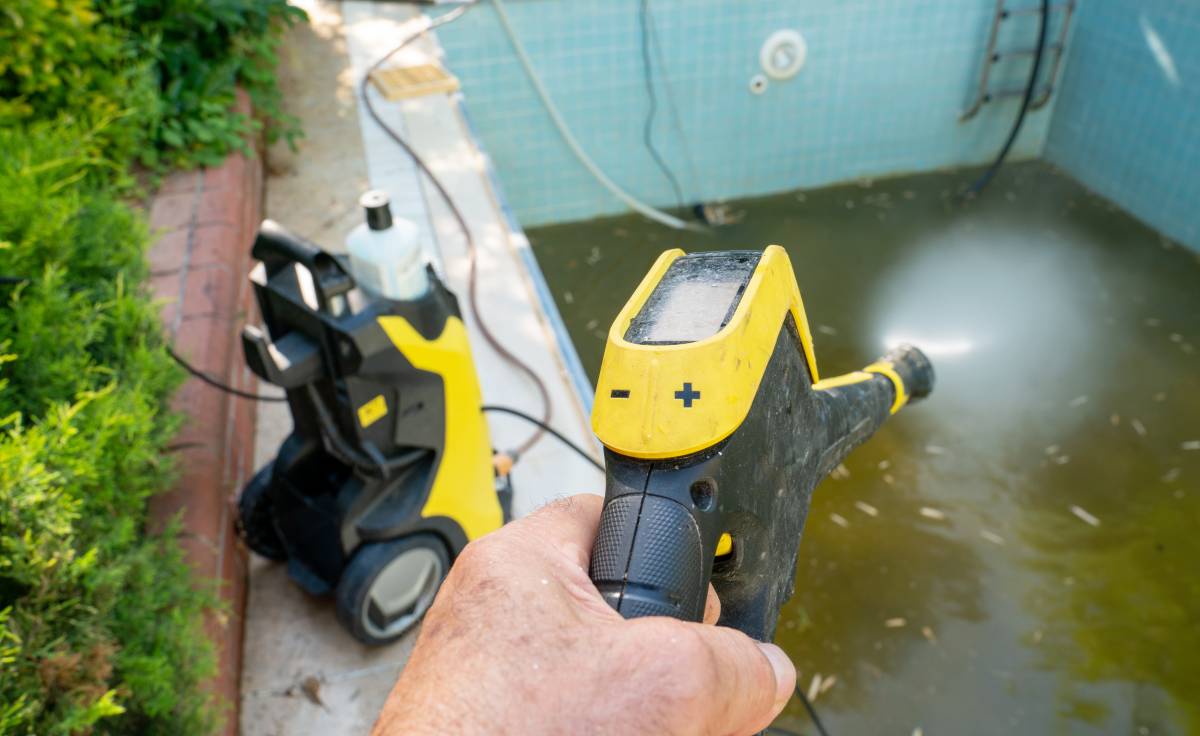
How to clean a dirty pool
Read more
Related price guides
